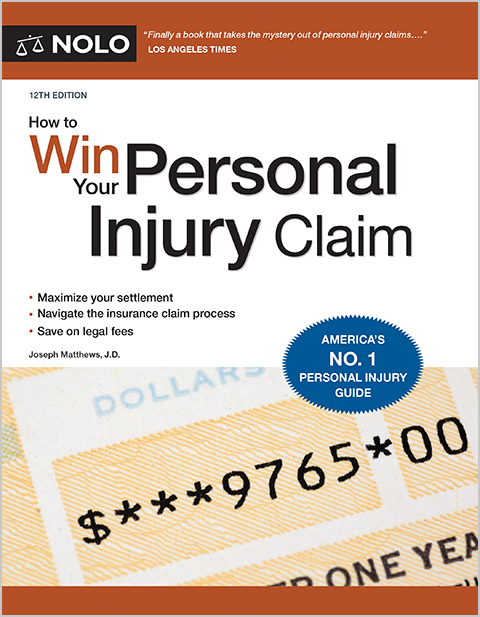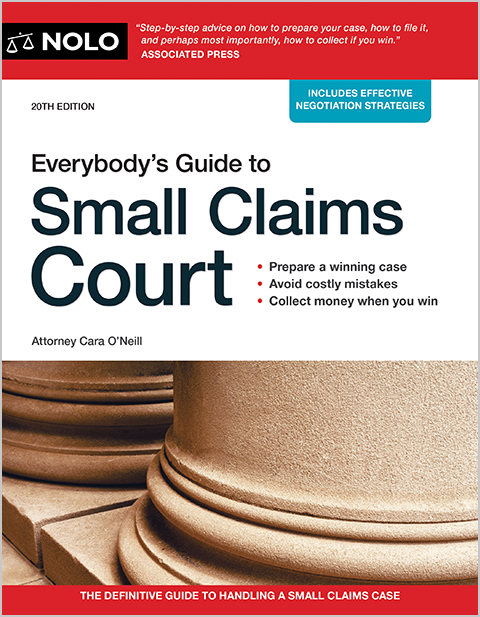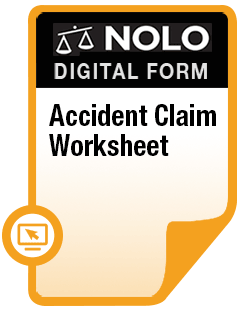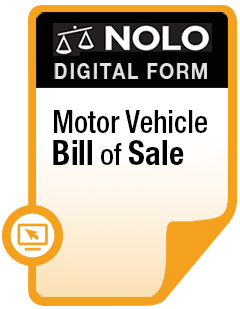Learn how the law applies to e-bike riders, how to stay safe, and what to do if there's an accident.
E-bikes and e-scooters have become popular options for commuting, running errands, and recreation. Unfortunately, their increased popularity has led to a corresponding increase in serious accidents and injuries.
E-bike accidents can be particularly dangerous for riders. A study funded by National Institute of Child Health and Human Development looked at data from 2000 to 2017. It found that e-bike users were more likely to suffer internal injuries and require hospital admission than people injured in accidents involving pedal bikes.
And, as more people ride e-bikes, these dangers are on the rise. According to the U.S. Consumer Product Safety Commission (CPSC), 53 people were killed in e-bike accidents from 2017 to 2021, with fatalities increasing significantly in 2020 and again the following year. E-bike injuries jumped dramatically in 2022, with emergency room visits more than doubling compared to 2021.
That doesn't mean you should stay away from e-bikes, but it does mean you should have the information you need to ride safely and with confidence. This article will provide an overview of what you should know before hopping on an e-bike, and offer some tips on how to respond if you're involved in an accident.
E-Bike Laws and Rules: The Basics
The laws that apply to e-bikes are set by state and local governments. They cover everything from safety and licensing requirements to where you're allowed to ride. Over time there have been efforts to make these laws more consistent across the country. To that end, the organization PeopleForBikes developed a three-tier system for classifying and creating rules for electric bicycles.
Most states have adopted some form of this approach, which makes it a helpful guide to how e-bikes are generally defined and regulated. But keep in mind that the three-tier system is just a framework that state and local governments can modify based on their needs and preferences. If you own or plan to ride an e-bike, make sure you know and follow the state and local rules that apply to you.
How the Law Defines and Classifies E-Bikes
The first step for lawmakers in establishing rules for e-bikes is deciding what separates an e-bike from an ordinary bicycle, a moped, and a motorcycle. Nearly all states have laws that define the term "e-bike." These definitions can be more complicated than you'd think. But, generally speaking, an e-bike is a regular bicycle that can use a motor to add power beyond the rider's pedaling.
The three classes of e-bike. As we mentioned above, most states have adopted a version of the three-tier system suggested by PeopleForBikes. Those guidelines divide e-bikes into the following categories:
- Class 1. Motors on these bikes only work when the rider is pedaling, and will not power the bike when it is traveling faster than 20 MPH.
- Class 2. Motors on these bikes can power the vehicle even when the rider isn't pedaling. But, like Class 1 bikes, Class 2 bikes' motors won't work when the bike is traveling faster than 20 MPH.
- Class 3. Motors on these bikes only work when the rider is pedaling. But they have a higher maximum speed—the motor will operate when the vehicle is traveling up to 28 MPH. Class 3 e-bikes must also have speedometers.
Limits on e-bikes' speed and engine power. If a bike's motor can sustain higher speeds than the state's limit for electric bicycles, then technically it isn't an e-bike anymore. Instead, it is subject to rules and laws that apply to more powerful vehicles like mopeds. The three-class system advocated by PeopleForBikes also suggests placing a ceiling on the power of an e-bike's engine, recommending an upper limit of 750 watts (one horsepower).
Do I Need to Wear a Helmet When I Ride an E-Bike?
It's a good idea to protect yourself by wearing a helmet when you ride an e-bike, but the rules for when you must wear a helmet vary widely by state. For example:
- In Connecticut anyone riding an e-bike must wear a helmet.
- In Colorado there is no helmet requirement for e-bike riders who are 18 or older. Minors can also ride some e-bikes without helmets, but are subject to more restrictive rules when it comes to e-bikes with a higher maximum speed.
- Like many states, Ohio divides e-bikes into three categories based on maximum speed and on whether the motor can operate when the bike isn't being pedaled. Only people riding e-bikes in Category 3—with the highest maximum speed—are required to wear helmets.
Do I Need a License, Registration, or Insurance to Ride an E-Bike?
In many states you don't need a license or insurance to ride an e-bike, and the e-bike doesn't have to be registered. A lack of an insurance requirement makes sense in states that treat e-bikes more like bicycles and less like motorized vehicles such as mopeds and motorcycles. Under Florida law, for example, an e-bike is "a vehicle to the same extent as a bicycle," and e-bikes are explicitly exempted from insurance, registration, and licensing requirements.
In New Jersey, on the other hand, the requirements are different depending on how powerful the e-bike is. Low-speed electric bikes—with a maximum speed of 20 MPH—are regulated like bicycles. They don't need to be registered and you don't need a license or insurance to ride them. E-bikes with a higher top speed are classified as "motorized bicycles," and subject to licensing, registration, and insurance requirements just like motorcycles or cars.
Are E-Bikes allowed on Sidewalks and Bike Paths?
Under the three-tier system, Class 1 and Class 2 e-bikes are treated the same as regular bicycles. This means that you can decide where to ride your e-bike the same way you would if your bike didn't have a motor—by knowing the local rules and watching out for signs that apply to cyclists.
Because of their higher top speed, Class 3 e-bikes are treated differently under the three-tier system. They are permitted in some places where bikes are allowed, like streets and bike lanes. But they are prohibited from areas where their speed could make them dangerous—for example, multiuse paths where cyclists must share the right of way with pedestrians.
Remember that not all states follow these guidelines exactly, and that municipalities can impose their own rules to fit local conditions. For example:
- California's default rule is that e-bikes in Class 1 and Class 2 are allowed on bike paths and in bike lanes, while those in Class 3 are not. But local governments are allowed to change this rule. They can pass ordinances that permit Class 3 e-bikes to operate in the same places as Class 1 and 2 e-bikes.
- Florida law generally allows you to ride an e-bike anywhere you can ride a regular bicycle. But state law also allows cities and towns to impose additional restrictions. That's why the Town of Palm Beach, citing safety concerns, is allowed to ban e-bikes on a trail that's open to regular bicycles.
Local rules like this are part of the reason it's vital to familiarize yourself with the rules for e-bikes and also remain alert while you're riding.
What Is the Age Limit for Riding an E-Bike?
Age limits for operating electric bicycles vary by state. Many states impose no age requirement for Class 1 and 2 e-bikes, but set a minimum age (usually 16) for riding a Class 3 e-bike. You can learn more about how kids can ride safely in the "E-Bikes and Children" sidebar below.
How Can I Make Sure I'm Compensated If I'm in an E-Bike Accident?
Even if you're careful and follow all of the rules while riding an e-bike, you might still get unlucky and be involved in an accident. Any accident is shocking and disruptive. But you can put yourself in the best position to recover physically and financially if you understand some key points about liability and insurance coverage.
Being liable for an accident means being responsible for causing it, and therefore responsible for the resulting financial and medical costs. An e-bike accident can raise questions about who's on the hook in this regard.
How Do You Determine Legal Liability for an E-Bike Accident?
It's important to understand how state and local laws for e-bikes can affect your legal liability if there's an accident. If you ignore or break a law, and are then injured in a way that could have been prevented had you followed the rules, many states will automatically find you negligent.
That could mean you won't be able to collect money in a lawsuit even if there are good arguments that someone else—someone who hit you with their car, for example—also has significant responsibility for the accident. It may also mean you'll be assigned some of the blame even if the accident was mostly someone else's fault, and receive a smaller settlement or court award as a result.
For example, let's say you ride an e-bike onto a bicycle path that has a sign posted prohibiting electric bicycles. You're riding cautiously, but end up in a crash with someone riding their regular bicycle recklessly on the wrong side of the path.
Ordinarily you'd have a good argument that the accident is entirely the other rider's fault. But, depending on your state's negligence rules, your failure to obey local laws about where to ride your e-bike might leave you partially or completely responsible for damage and injuries suffered by both you and the other rider.
If you think that outcome seems unfair, some states agree. Virginia, for example, requires e-bike riders to wear helmets, but also specifies that not wearing a helmet doesn't make a rider negligent or reduce the amount of damages they might recover in a lawsuit if they're injured.
Of course, helmet laws highlight the importance of following safety rules and traffic laws for your own protection and the protection of others—it's much better to avoid an injury entirely than to win a legal argument over compensation for your medical bills.
How Can Insurance Help If You're in an E-Bike Accident?
As we noted above, many states don't require e-bike owners or riders to have insurance. So, if you (as a driver, pedestrian, or bicyclist) are injured in an accident with an e-bike rider, you'll probably have to rely on your own health insurance to pay for any necessary medical treatment.
If you have certain kinds of car insurance—like personal injury protection / medical payments coverage—that might also be an option. But to get compensation for the full spectrum of your accident-related losses (including "pain and suffering") you'll probably need to file a personal injury lawsuit against the e-bike rider and hope they have enough assets to either settle with you or pay any court judgment in your favor.
On the flip side, as a rider, the possibility that you might be sued in the wake of an accident is one reason it makes sense to look for e-bike insurance coverage. Insurance could also help you cover the cost if your e-bike is damaged or destroyed in an accident.
E-bike insurance isn't as common as auto insurance, but you still have options. You might be able to find an e-bike-specific policy, or to get coverage through your rental or homeowners' insurance. But it's crucial to make sure you read any policy closely so you understand exactly what it will cover.
What Happens If I Get in an Accident on a Rented E-Bike?
The forms you sign (or click through) when you rent an e-bike include an agreement that the rental company can't be held responsible if there's an accident.
This kind of agreement doesn't mean it's impossible to recover money from the rental company if you get into an accident as the result of a serious malfunction with their equipment. (In that situation, the rental company, the manufacturer, or both might be liable.) But it does mean you should generally assume that you'll have to handle the aftermath of an accident without any financial help from the e-bike rental service.
What Happens If My E-Bike Malfunctions?
Whether you own an e-bike or are riding a rental, you're taking on some expected risks that can't be blamed on the manufacturer—for example, the risk that you might be hit by a careless driver or that you might lose your balance and fall.
But that doesn't mean e-bike manufacturers are never responsible for injuries caused by their products. You might have a product liability claim if you're injured as a result of a defect in an e-bike.
For example, a defective e-bike battery can cause a fire or even an explosion. Fires can also be caused by faulty chargers and other charging issues. There are signs that public safety measures are reducing the seriousness of e-bike fires. For example, after rising for several years in New York City, fatalities and injuries from e-bike declined in 2024. This decline coincided with a new law that regulates the safety of e-bike batteries, and a campaign to educate the public about safe charging practices.
If you were injured or your property was damaged in an e-bike fire, you'd have good reason to seek compensation from the manufacturer. Of course, you're better off avoiding a fire in the first place. You can reduce the risk by following tips from the National Fire Protection Association and this advice from Consumer Reports and FDNY.
Learn More About E-Bike Law and Safety
If you've been injured in an e-bike accident—whether on the road or because of a defect with the product—you might be wondering about your legal options. You can find out more about how to make a personal injury claim and get more information about whether a product liability claim might make sense. You can also use the features on this page to get in touch with an attorney in your area and discuss your situation in more detail.



